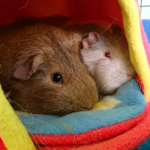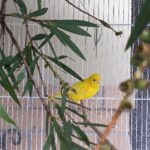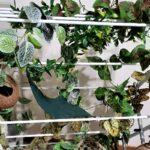To finish our monthly theme of appropriate substrates we are talking about reptiles! Appropriate caging substrates are important to maintain the health of your reptile. Having bedding that is too dusty can predispose to respiratory irritation, some substrates are easily ingested by reptiles and can cause gut irritation, and if turtles don’t have appropriate tank substrate the biological filter required for waste breakdown won’t flourish as is necessary!
There are a number of different options for enclosure substrates for reptiles. It is important to find a balance between appropriate environmental enrichment and appropriate cage hygiene, and also cost effectiveness. The most simple and cost effective substrate is newspaper or other paper product on the floor of the cage.
This substrate won’t irritate airways and lends itself to regular cleaning. However it won’t allow some normal behaviours e.g. burrowing, and doesn’t provide reptiles with enrichment. Sand, critter crumble, bark etc. are substrates commonly used that do allow burrowing behaviour and provide your reptile with different and more natural textures. However some of these substrates can be dusty and if not regularly changed can be unhygienic. One way we have found to have the best of both worlds is to use newspaper as your base substrate, and then provide sand or other environmentally rich substrates in kitty litter boxes to allow ease of cleaning. This will also reduce the chances of reptiles ingesting substrate material, as we can feed them in an area of the tank with newspaper.
It is becoming more and more popular for reptiles to be housed in bioactive enclosures. Bioactive enclosures are tank set ups that include living elements such as plants and insects to create a self-sustaining ecosystem in which you reptile can live. There are many benefits to bioactive enclosures, including most closely mimicking the wild environment, and therefore allowing reptiles to display normal species appropriate behaviours. However bioactive enclosures require a significant time investment for appropriate set up, and need to be maintained appropriately. Plants often require additional lighting to aid in growth, and the ‘clean up crew’ (insect populations within the enclosure) need to be maintained adequately. When done properly, bioactive enclosures make fantastic environments for our captive reptiles.
For turtles sand is probably the best substrate to have in your tank. 3 – 5cm of this is best. Small gravel can be ingested by your turtle and cause obstructions. Large pebbles will not form an adequate environment for the good bacteria to live in. Without enough good bacteria in the tank the biological filter will not work and can result in water quality issues.
If you have any questions about the substrate in your reptiles tank feel free to call the clinic today on 07 3217 3533.

Keeping reptiles on newspaper has a number of benefits including low cost, availability and ease of cleaning. However newspaper as a substrate doesn’t provide much enrichment.



